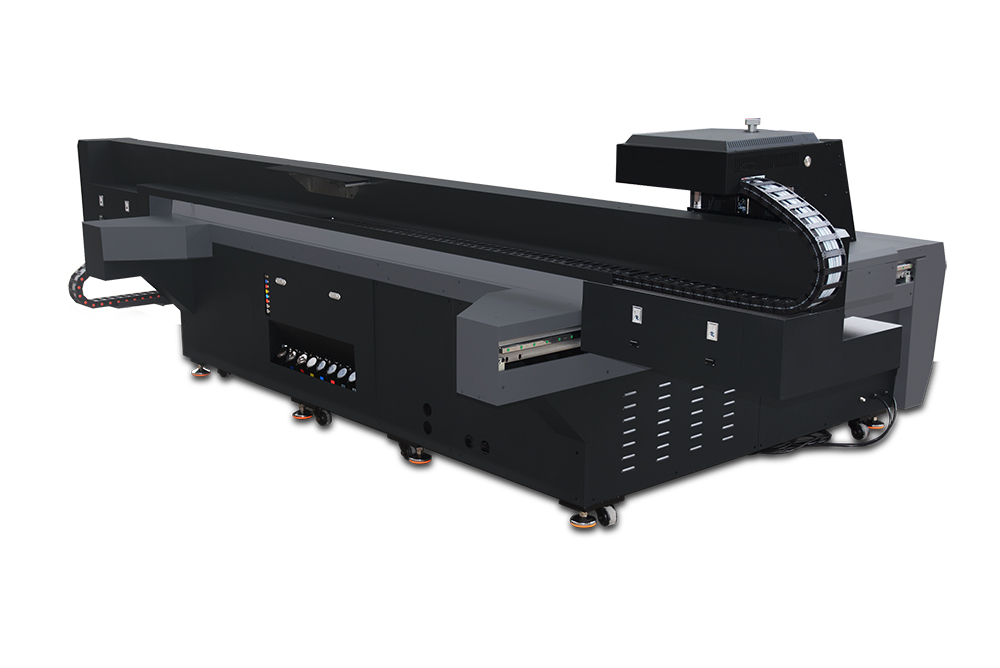How to Troubleshoot Inkjet Nozzle Clogging in UV Flatbed Printers?
How to Troubleshoot Inkjet Nozzle Clogging in UV Flatbed Printers?
UV flatbed printers are renowned for their ability to produce high-quality prints on various materials, making them a popular choice for businesses in the signage, packaging, and decorative industries. However, like any printing technology, they are not without their challenges. One common issue that users may encounter is inkjet nozzle clogging, which can significantly affect print quality and efficiency. This article aims to provide a comprehensive guide on how to troubleshoot and prevent inkjet nozzle clogging in UV flatbed printers.

Understanding Inkjet Nozzle Clogging
Inkjet nozzle clogging occurs when the small nozzles or jets that dispense ink become partially or fully blocked. This blockage can be caused by a variety of factors, including dried ink, dust particles, debris, or even ink that has begun to cure inside the nozzle due to exposure to UV light. When nozzles are clogged, ink flow is restricted, leading to issues such as missing dots, lines, or even entire sections of the print. In severe cases, it can cause the printer to malfunction entirely.
Identifying the Symptoms
Before delving into the troubleshooting process, it’s crucial to identify the symptoms of inkjet nozzle clogging. Common indicators include:
Decreased Print Quality: Prints may appear blurry, with missing or distorted lines and dots.
Inconsistent Ink Flow: The printer may struggle to maintain a consistent ink flow, resulting in uneven print density.
Frequent Print Head Cleaning Cycles: If the printer is constantly initiating cleaning cycles, it could be a sign of nozzle clogging.
Slow Printing Speed: Clogged nozzles can cause the printer to slow down significantly.
Printer Error Messages: Some printers may display error messages indicating a problem with the print head or ink system.
Troubleshooting Steps
Once you’ve identified that inkjet nozzle clogging is the issue, follow these steps to troubleshoot and resolve the problem:
Perform a Manual Clean:
Most UV flatbed printers have a built-in cleaning function. Use this to initiate a cleaning cycle and attempt to clear any blockages.
If the printer does not have an automatic cleaning function, you can manually clean the nozzles using a soft, lint-free cloth dampened with a small amount of isopropyl alcohol. Be sure to follow the manufacturer’s guidelines to avoid damaging the print head.
Check and Replace Ink:
Old or low-quality ink can contribute to nozzle clogging. Check the ink levels and replace any ink that is low or has been sitting in the printer for an extended period.
Consider using ink specifically designed for UV flatbed printers to minimize the risk of clogging.
Adjust Print Settings:
-Sometimes, adjusting the print Settings can help reduce the risk of nozzle clogging. Try to slow down the printing speed to reduce the likelihood of ink drying quickly in the nozzle.
Also, consider adjusting the UV lamp intensity or curing time if the ink is curing too quickly inside the nozzles.
Inspect and Clean the Print Head:
If the clogging persists, you may need to inspect the print head more closely. Use a magnifying glass to examine the nozzles for any visible blockages.
Carefully clean any debris or dried ink from the nozzles using a soft brush or a specialized print head cleaning kit.
Replace the Print Head:
If all else fails, the print head may be permanently damaged. In this case, you will need to replace it with a new one. Be sure to follow the manufacturer’s instructions for proper installation.
Preventive Measures
While troubleshooting is necessary when nozzle clogging occurs, taking preventive measures can significantly reduce the likelihood of this issue in the future. Consider the following:
Regular Maintenance: Establish a regular maintenance schedule for your printer, including cleaning the print head and replacing ink as needed.
Use High-Quality Ink: Always use ink that is specifically designed for your UV flatbed printer to minimize the risk of clogging.
Control Environmental Factors: Keep the printer in a clean, dust-free environment, and maintain a stable temperature and humidity level to prevent ink from drying too quickly.
Proper Shutdown Procedures: When not in use, follow the manufacturer’s guidelines for shutting down the printer to avoid ink curing inside the nozzles.
Train Operators: Ensure that all operators are trained on proper printer use and maintenance to minimize the risk of human error causing nozzle clogging.
Conclusion
Inkjet nozzle clogging can be a frustrating issue for UV flatbed printer users, but with the right troubleshooting steps and preventive measures, it can be managed effectively. By understanding the causes of clogging, identifying the symptoms, and taking proactive steps to maintain your printer, you can minimize the impact of this issue on your printing operations. Remember, regular maintenance and the use of high-quality ink are key to keeping your UV flatbed printer running smoothly and producing high-quality prints for years to come.
